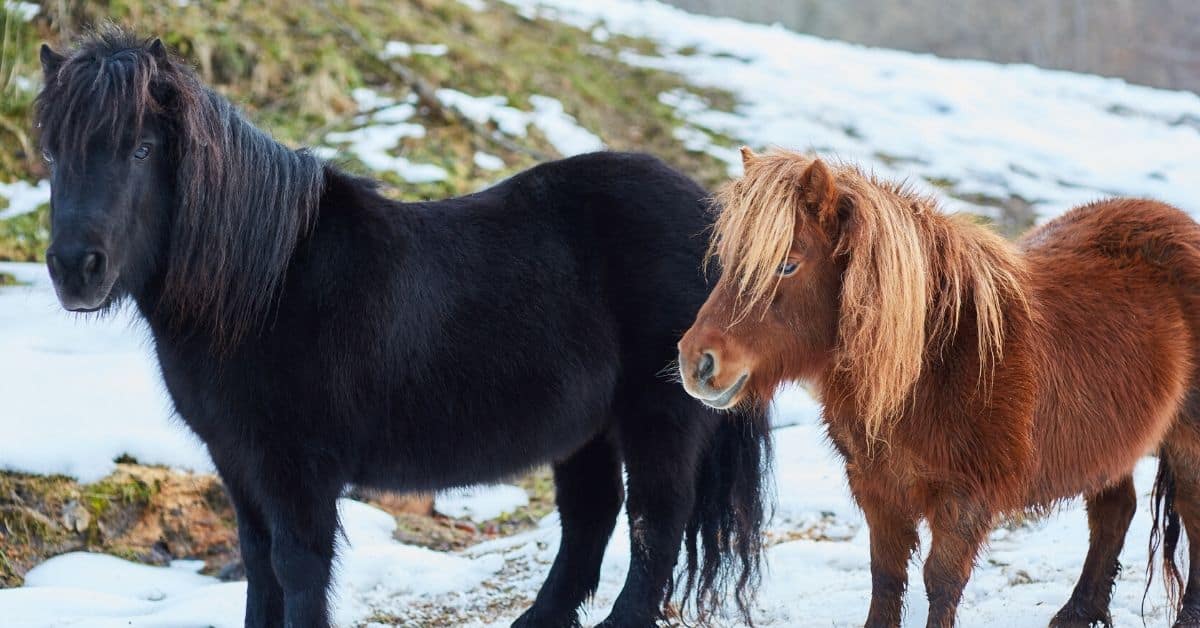Maybe the most seasoned variety of pony in Britain is the Shetland Pony horse. Named after the islands where it started, it is presently perhaps the most well-known horse on the planet. The little Shetland is most likely so shaggy in light of the fact that it was molded by its current circumstance. The Shetland Islands off the north bank of Scotland are generally infertile and have an unforgiving environment. For a long time, the Shetland horse lived in the open, shielded from the components exclusively by this thick hair, long mane, and forelock. Shetland Islanders trained horses to accomplish helpful work for them. The horse conveyed the peat from the bog to the house for use as fuel. They additionally conveyed kelp from shore to fields to be utilized as manure.
Actual Portrayal
The Shetland is likely the most grounded equine comparative with its size, yet steeds are additionally delicate and tame. The British Shetland’s body is loaded with short, solid legs. It has an adequate mane, forelock, and tail. The tone changes as indicated by the season. Numerous tones are found in this variety, with the most widely recognized being dark and dull brown. Shetlands are currently for the most part tamed, however, contend in weightlifting occasions, are displayed in bridle classes, and are placed into more modest vehicles for driving. It remains on a normal of 9.3 hands and doesn’t surpass 10.2 hands.
Unique
The last beginning of the Shetland horse, bigger than the advanced variety, returns to the equids, who lived in the Shetland Islands as right on time as the Bronze Age. At the point when the Norsemen attacked the islands, they carried with them horses that were the predecessors of the cutting edge Dole Pony. These horses were crossed with local stock which made a variety like the Shetland Pony known today.
Coal Pit Pony
The Shetland Pony is perceived as the most grounded equine comparative with size in presence. Accordingly, when the coal mining industry in Britain grew widely during the 1800s, enormous quantities of Shetlands were imported to pull coal vehicles in the “pits”. Large numbers of these horses were conceived and kicked the bucket in mines. A few groups in a real sense never came around. Numerous Shetlands were subsequently sent out to America to work in the coal mineshafts. By the mid-1900s automation made Shetland unequipped for coal mineshafts. In the coal-rich American Midwest, draft Shetlands are as yet normal and contend in weightlifting rivalries at province fairs, with weighty draft ponies contending.
Breed History
Little horses have been available in the Shetland Islands for more than 2000 years and likely any longer. Different unearthings on the islands have uncovered little horse bones that existed during the Bronze Age and it is accepted that horses have been in homegrown use since this time.
The Shetland is thought to have begun in the tundra and mountain horse kinds of the Cob type from southern Europe, which traveled through ice fields and land, later acquainted with the islands by Celtic people groups who presented a horse that It was created by intersection a similar mountain horse type with an Oriental pony. Once you read this topic must read another topic is mountain cur Dog with its history.
Because of their island presence, the horses prospered with generally little imports and the individuals who showed up were little because of the hardships of transport via ocean. Two significant sorts set up themselves inside the variety, the hefty hard creature with a long head and the lighter with a high tail carriage and short agile head, and these unmistakable highlights stay that save the horses in extraordinary condition for their evolving jobs. Have raised Service to humanity.
Different reports and portrayals of the horse over the course of the hundreds of years allude to its short height, strength, toughness, and life span. The cruel winters of the islands are surely the justification for the toughness and virtue of the variety, not as a result of the disregard of the proprietors but since of the troubles of the grub accessible for their sheep and cows, with unquestionably the hardest enduring winters for reproducing. No spot in Shetland is multiple miles from the ocean and it is incredible that during the most noticeably awful winters the absence of nibbling on the Scheldt drives a few horses to seagrass along the shores. Nonetheless, because of the meager day-to-day environments, the horses were not little, but rather it was the more modest horses that had the option to endure, though the bigger ponies were not. Shetlands are brought up in gentle environments, given sufficient food, don’t increment in size by any means.
Different anecdotes about the strength of horses are unbelievable – for their size, they are the most grounded of all pony breeds. For quite a long time the horses cultivated the land, conveying peat from the platforms and ocean growth for the fields, and used to ship their proprietor. The horse was never a draft creature until the mid-nineteenth century as there could have been no appropriate street up to that point. Pony possessing anglers had the option to utilize braid hair for their lines.
